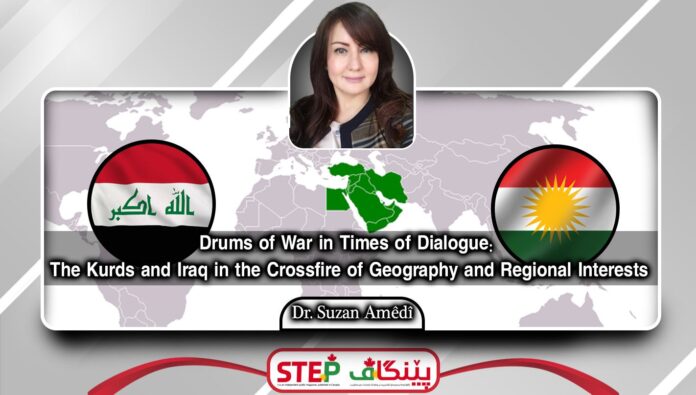By: Dr. Suzan Amêdî
Amid ongoing negotiations between Iran and the United States, a fundamental question in international relations resurfaces: when does the declaration of war become an inevitable necessity? Can military action—despite its costs—become the lesser of two evils when compared to letting matters spiral out of control?
This question gains further depth when we examine the regional balance of power, especially given the intertwined fates of actors like the Kurds and Iraq—who are often among the first to feel the impact of regional shifts, yet the last to be considered in shaping major policies.
As tensions escalate in the region, the crucial question remains: will the situation reach the point of war? In this context, the debate grows over the legitimacy of military action as a response to the current complexities.
The Legitimacy of War: When Does It Become Justified?
Under international law, the use of force is permitted only in two cases: self-defense, or by a decision from the UN Security Council. Yet in reality, laws alone do not dictate outcomes—facts on the ground and evolving threats impose their own urgency.
There are historical moments where danger becomes so imminent that war, despite its horror, appears as the lesser evil. Still, war must always be the last resort—employed only after exhausting all means of deterrence and dialogue, and after confirming that all alternatives have failed, and national security is truly at risk.
Having addressed the legitimacy of war and the factors that may make it necessary, we must turn to the groups directly affected by any potential conflict. What role will the Kurds play in this equation—are they positioned for hopeful change, or are they heading into danger under rising tensions?
A – The Kurds of Iraq
1. They have prior experience cooperating with the international coalition against ISIS.
2. They may be seen as partners, but are also vulnerable to potential Iranian retaliation, especially if their territory is used for military operations.
3. Most likely, they will adopt a cautious balancing act—coordinating with the West while trying to avoid provoking Iran.
B – The Kurds of Iran
1. They may view instability as an opportunity for liberation, but the Iranian regime is unlikely to tolerate any rebellion.
2. Their presence could be exploited as a bargaining chip, rather than recognized as a genuine liberation cause.
3. They will likely be the first to suffer if unrest erupts within Iran.
C – The Kurds of Syria
4. They possess relatively strong military and organizational structures (SDF).
5. They may attempt to negotiate with global powers to secure their gains, but they are threatened by multiple forces: Iran, the Syrian regime, and Turkey.
6. They are unlikely to enter the conflict directly unless given strong guarantees.
D – The Kurds of Turkey
1. They will face increasing security pressure, as Ankara may exploit any chaos to target Kurdish opposition.
2. They are unlikely to play an active role in the conflict, but will pay the price politically and in terms of security.
In summary, the Kurds remain caught between being a bargaining chip and a victim in the conflict. It is difficult for them to speak with an independent voice unless there is genuine international will to support or protect them.
While the Kurds continue to play a key role in the regional struggle, one cannot overlook Iraq’s significance as a central state in this context. What is Iraq’s position amid these crises? And how will its internal political divisions and security deterioration affect its future if conflict erupts?
Iraq will remain at the heart of the storm. Its internal political crises are worsening, and divisions among its factions are deepening—leaving the country exposed to greater instability.
The following are some key aspects of this fragmentation:
1. Iran-aligned Popular Mobilization Forces (PMF) may enter the conflict unilaterally.
2. The central government will face a complex dilemma—trying to maintain balance between Washington and Tehran.
3. Public opinion is divided between those who reject Iranian influence and those who see the U.S. as the greater threat.
On the Security Front
1. Assassinations, bombings, and attacks on foreign interests may increase.
2. Security vacuums could emerge in various regions, especially if foreign troops withdraw or reprioritize.
3. ISIS may re-emerge, taking advantage of chaos and lack of coordination.
On the Economic Front
1. Given Iraq’s reliance on Iran for energy, any military escalation could worsen the electricity crisis and lead to broader economic collapse.
2. Prices of food and fuel may soar, while foreign investment collapses.
3. Oil revenues could decline due to disruptions in the Gulf, resulting in a financial crisis.
On National Sovereignty
1. Armed factions might exploit the situation to impose new realities on the ground.
2. The Iraqi file could become internationalized under the pretext of protecting stability.
3. There could be an actual division of influence between domestic and foreign actors, further weakening the state.
As Kurdish and Iraqi interests continue to intersect with regional conflict dynamics, the international position becomes a key factor—either offering a path to resolution or adding fuel to the fire. How is the global community responding to this escalation? Can it guide a solution, or will it remain locked in deterrence at the expense of stability?
Despite growing tensions, the international community is far from united in its stance on declaring war against Iran.
The situation breaks down as follows:
1. The United States prefers political pressure and sanctions, using the threat of war as a deterrent rather than an active choice.
2. The European Union opposes military action and advocates for reviving the nuclear deal and diplomacy.
3. Russia and China strongly reject any military intervention in Iran, seeing it as a threat to regional stability and their strategic interests.
4. Within the region, opinions are split—some countries see Iran as a direct threat, while others fear the consequences of war more than Iran itself.
This international fragmentation complicates the likelihood of an outright war. Still, it does not eliminate the possibility of proxy conflicts or limited strikes under the guise of preventive deterrence.
Conclusion
Ultimately, war is not a decision driven by emotions or slogans—it is dictated by facts and evolving realities. In the Middle East, every bullet fired could ignite fires that burn for decades. As for the Kurds, they stand between hope for change and fear of being sacrificed first. And Iraq—burdened by layers of geopolitical and political crises—will remain on the frontline of every regional conflict until it is rebuilt on foundations of sovereignty and true neutrality.
In this light, the federal Iraqi government must address internal challenges with a holistic national vision—prioritizing citizenship over sectarian or regional loyalties. Iraq’s stability requires moving beyond intra-Arab (Sunni-Shi’a) divisions and resolving its issues with the Kurds.
Respecting the federal system and securing the constitutional rights of the Kurdistan Region are essential pillars in building a stable and unified Iraq. Furthermore, fostering a shared national loyalty—free from foreign influence—is the real path toward sovereignty and long-term peace.





